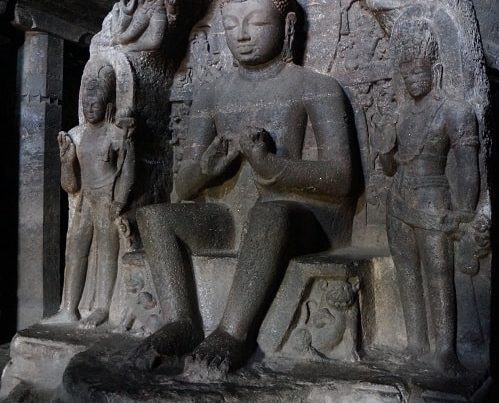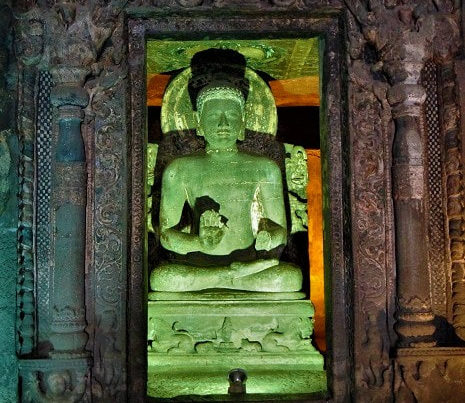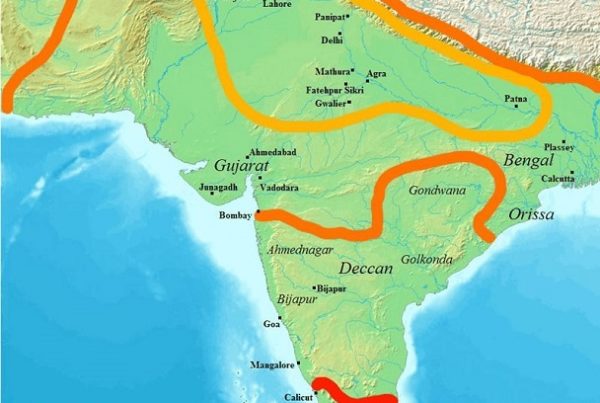Last week, we talked about the 10 most beautiful temples in Maharashtra. This week we talk about exploring Maharashtra a little more with the list of our 5 favourite historical figures of Maharashtra. We have classified them by birth year.
Malik Ambar: Journey from slave to Prime minister
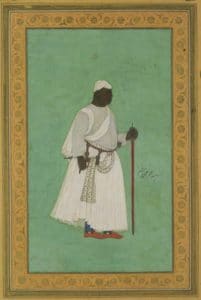
A few days ago, on May 14, 2020, we talked about the 394th death anniversary of Malik Ambar. Honestly, he is our favourite historical character of Maharashtra.
His life
Born in Ethiopia in 1526, under the name of Chapu, he was captured at young age by militants. He was sold as a slave several times before arriving in India. His master was Chengiz Khan, the Prime Minister of the Nizam of Ahmednagar. He got impressed by the intelligence of his slave, he decided to teach him diplomacy, the art of war and to rule a kingdom. On the death of Chengiz Khan, his wife released Malik Ambar.
Once becoming free, he constitutes an army and put at the service of the kingdoms of Deccan. In the last decade of the 16th century, he stood with Chand Bibi against the Mughal army. When Chand bibi died, he became the Prime Minister of the Nizam. He built the city named Khadki, now known as Aurangabad. And he designed a hydraulic system to bring water source to the city which is still in operation today. He died in 1626 and buried in Khuldabad.
Why do we like Malik Ambar?
- His life shown that nothing is impossible and one can be the master of his own destiny.
- He shown a great tolerance and succeeded in uniting Maharashtra against the Mughal empire.
- Even if he was not born in Maharashtra, he worked all his life for independence and the freedom of people.
Chand Bibi: the first woman in our 5 favourite historical figures
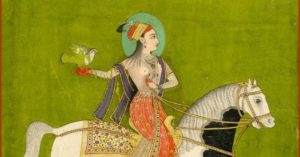
Chand Bibi is completely forgotten at the moment but she played an important part in the freedom and the independence of Maharashtra.
Her life
Chand Bibi was a princess. She is the daughter of Hussain Nizam Shah I of Ahmednagar. At young age, she shown remarkable intellectual capacities. She spoke at least 5 languages such as Arabic, Persian, Turkish, Marathi and Kannada. Chand Bibi was also gifted for with music art because she used to play Sitar and she liked to draw paintings of flowers. She was doomed to spend a princess life.
Things did not go as planned. Chand Bibi was married to Ali Adil Shah I of the Sultanate of Bijapur. When he died in 1580, he left the sultanate without an heir. The nobles decided to put the nephew of the former sultan, Ibrahim Adil Shah II, on the throne. As he was only 9 years old, he needs a regent. Kamal Khan took power and became regent. He dismisses Chand Bibi and accused her of wanting to usurp the throne. The latter decided to group other generals against Kamal Khan. He tried to escape but later, was beheaded in the fort of Ahmednagar. Another regent was appointed at times, Ikhlas Khan. He was regent from 1582 to 1591. The sultanates of Ahmednagar and Golconda took advantage of the instability to attack Bijapur.
In 1591, when peace returned, Chand Bibi decided to return home to Ahmednagar.
Chand Bibi as a warlord
In 1595 Ibrahim Nizam Shah, the sultan of Ahmednagar died in a battle against Bijapur. The nobles named his son, Bahadur Shah sultan under the regency of Chand Bibi. Miyan Manju challenged her and wanted to put someone else on the throne. To achieve his goals, he asked the great Mughal empire for help.
In November 1595, Chand Bibi led the troops against the largest army of the time. She won against them successfully. For 4 years, she fought against the Mughals. In 1599, she was assassinated by her generals who thought she was going to negotiate with the emperor Akbar. Four months after her death, the fort of Ahmednagar fell into the hands of the Mughals.
Why do we like Chand Bibi?
- She could have remained a passive princess but she preferred to fight.
- Chand Bibi had great intelligence and exceptional tactical finesse.
- She is an example for women of the time.
Chhatrapati Shivaji Maharaj: The hero of Maharashtra
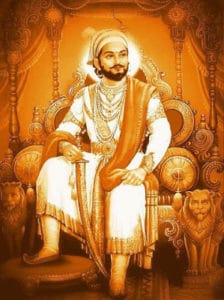
Chhatrapati Shivaji Maharaj
If you are visiting Maharashtra, you won’t miss the many statues and buildings named after Shivaji Maharaj. In Bombay (Mumbai), the airport, the train station, the largest museum in the city bears his name.
His life
Shivaji Bhosle born in 1630 in the Shivneri fort near Pune. He inherits a jahagir (fief) from his father. His mother wanted to give him the best education as possible. This is why she asked Dadoji Kondadev to be her tutor. The latter teaches young Shivaji what he needs to know about governance and military art. It stimulates the independence of young mind.
Faced with the presence of the Mughals, invaders from northern India. Shivaji Maharaj begins a journey of independence for Maharashtra. From 1646, he used the guerrilla warfare, once used by Malik Ambar against the Mughal empire. He seized a fort near Pune. This success was the beginning of his fame.
For 14 years, he contested territories in the Sultanate of Bijapur. At the end of his war process, he decided to take Konkan, a territory wedged between the sea and the mountains. This new territory allowed him to develop a fleet to protect the coasts of Maharashtra and control economic exchanges.
In 1665, the Mughal emperor Aurangzeb worried about the growing power of Shivaji Maharaj. He allies with the sultanate of Bijapur against Shivaji. For 5 years, the Maratha kingdom fought against the Mughal empire. He got much more success. In 1665, a peace treaty was signed and Shivaji gave up 23 of the 35 forts he had captured.
On June 6, 1674, he was crowned as king (Maharaj) in Raigad, the capital of the new Maratha Empire.
In March 1680, Shivaji Maharaj fell seriously ill and died on April 3.
Why do we like Chhatrapati Shivaji Maharaj?
- He fought all his life for the freedom of his people.
- Shivaji Maharaj never stayed behind taking big risks.
- He was a fine strategist and was ahead of his time.
Tarabai Mohite: Another women warrior of Maharashtra
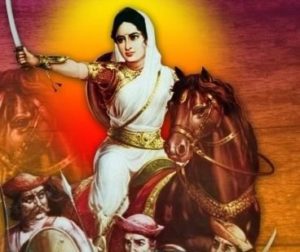
Maharashtra is a state that has known for many exceptional women. This is the case of Tarabai who was like Chand Bibi, a warrior woman.
Her life
Tarabai Mohite was born in 1675 in a clan closed to the family of Chatrapati Shivaji Maharaj. She was married to Rajaram Bhosle, son of Shivaji Maharaj and half brother of Sambhaji.
When Sambhaji died, his son Shahu was a prisoner of the Mughals. After throne returned to Rajaram, Tarabai’s husband. He died in 1700, leaving his throne to a-year-old son Shivaji II. Tarabai became regent. For 7 years, she dominated the Mughal empire. Tarabai was an extraordinary rider. She led strategic cavalry movements. She was on the front line against the Mughal empire. On her regency, Jadunath Sarkar, Indian historian said: “During this period, the supreme ruling force of Maharashtra was not under a minister, but the Dowager Queen Tara Bai Mohite. Her administrative genius mind and her strength of character saved the nation in that terrible crisis. ”
When Aurangzeb died in 1707, his son decided to release Shahu, the grandson of Shivaji Maharaj and heir to the throne. For two years, Tarabai fought to have her son recognized as the legitimate king of the Marathi Empire. In 1709, an agreement was reached to a point and Tarabai moved to Kolhapur and created the state of Kolhapur. Unfortunately a year later, the other widow of Rajaram dispossesses Tarabai and her son governance the new state.
Tarabai settled in Satara, after the death of her son, recognized Shahu as heir to the empire. At the end of her life, she came into conflict with the Peshwa who took an important part in the direction of the Marathi empire.
Why do we like Tarabai Mohite?
- All her life was disappointed, but she never gave up hope and always fought strong.
- Tarabai Mohite was a woman warrior which used to be less in that era.
- By being at the origin of the creation of Kolhapur, she developed a very beautiful city in Maharashtra.
Ahilyabai Holkar: A Queen who rebuilt temples of India
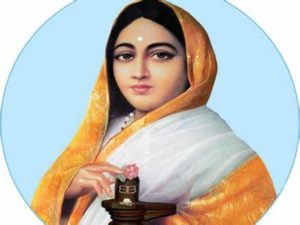
When we say that Maharashtra has exceptional women, Ahilyabai Holkar is no exception to that saying.
Her life
She was born in a Jamkhed, a small village near Ahmednagar on May 31, 1725. Her father was a chief of village. At the time, girls did not receive education. Ahilyabai Holkar had the chance to learn to read and write, thanks to her father.
Her posterity begins with a stroke of luck by fate. At the age of 8, Ahilyabai started idolising temples in her village. Malhar Rao Holkar, general in the service of Peshwa Balaji Bajirao and lord of the Malwa territory stops in the village. He was amazed by the piety of the girl and decided to bring her back her kingdom so that she can became the wife of his son.
After the death of her husband in 1754 and her son in 1767, she became a Queen of Holkar. As if there were not enough kings, she authorized her daughter’s marriage to a poor but courageous man who had defeated the dacoits, hordes of bandits.
She was also on the front line on an elephant during conflicts or wars.
The work of her life
She decided to restore or rebuild many temples such as the Shiva temple in Varanasi or the twelve Jyotirlingas. She developed the road system of her kingdom, created the city of Indore and invested in technology, notably silk or textile.
Joanna Baillie wrote a poem in 1849 to the glory of Ahilyabai Holkar:
“For thirty years her reign of peace,
The land in blessing did increase;
And she was blessed by every tongue,
By stern and gentle, old and young.
Yea, even the children at their mother’s feet
Are taught such homely rhyming to repeat “
In latter days from Brahma came, To rule our land, a noble Dame, Kind was her heart and bright her fame, And Ahlya was her honored name.”
Why we love Ahilyabai Holkar?
- Ahilyabai was a revolutionary of her time.
- She left a huge legacy all over India.
- Like the other women of Maharashtra, she took charge of her destiny.
What do you think of this list? Leave us a comment if you think we forgot someone. If you wish to visit the places which mentioned in our 5 favourite historical figures, do not hesitate to contact us or to see our tours in Maharashtra.



